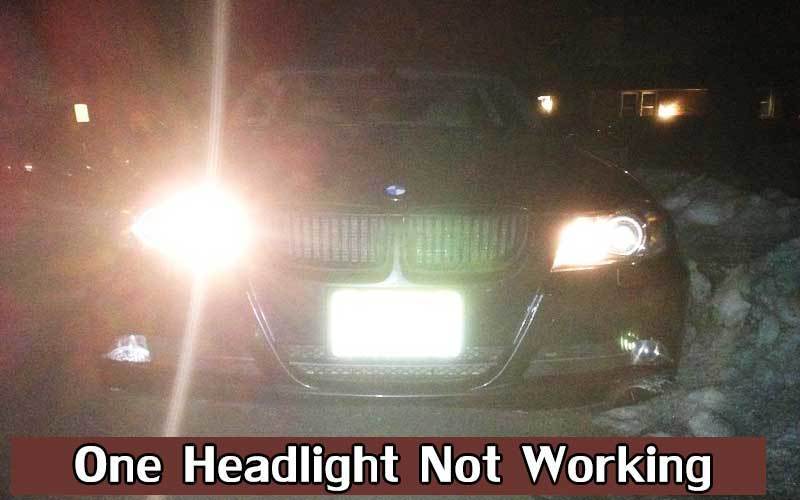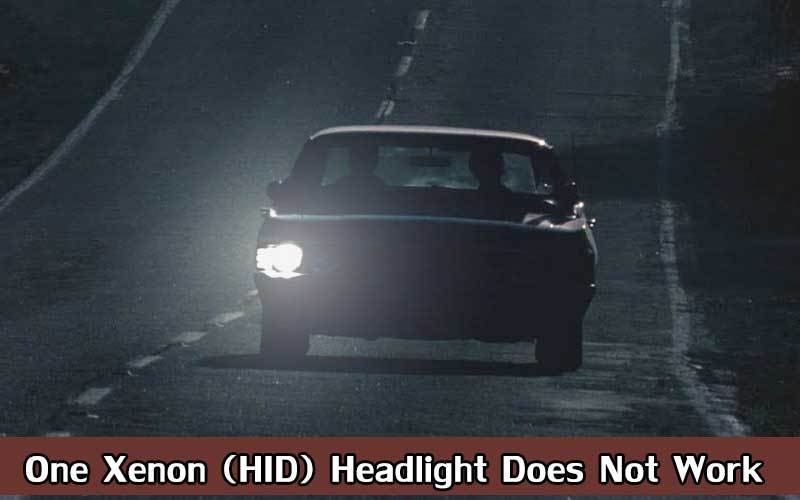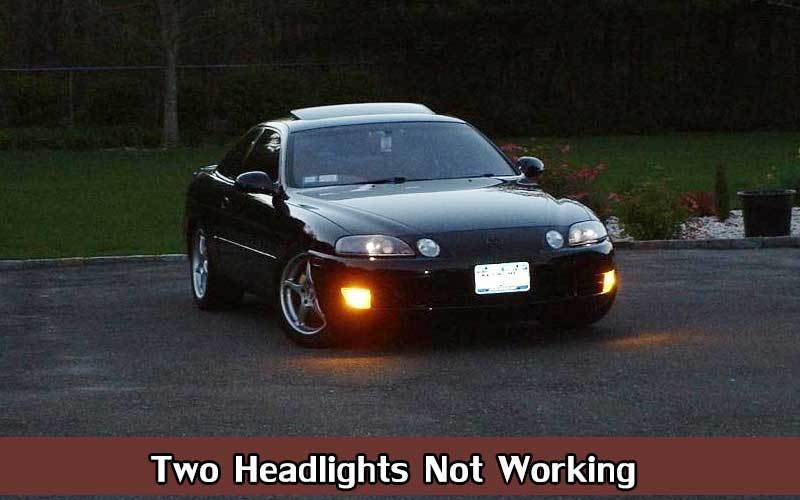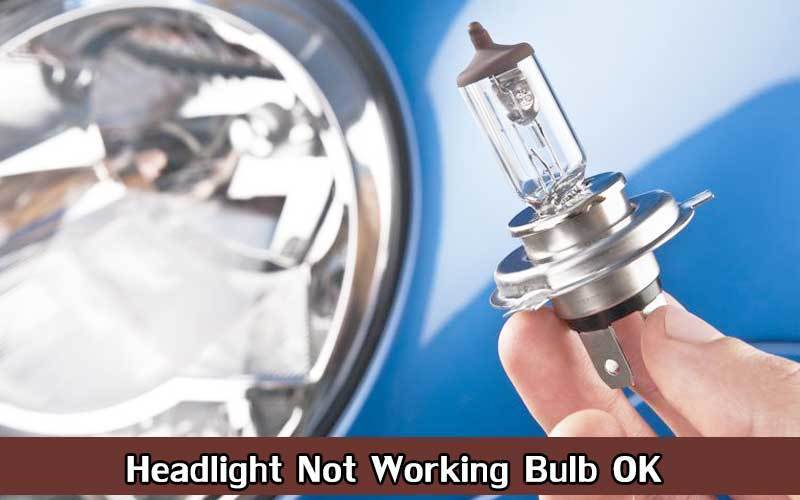I’ll never forget that night on Highway 50. Pitch black, no streetlights, and suddenly – both headlights dead. Nothing. Just me, my family, and 70 mph of pure terror until I could coast to the shoulder. That near-miss turned me into a headlight troubleshooting expert real quick.
After 20 years as a mechanic and fixing thousands of headlight problems, I’ve seen it all. From simple $3 bulb swaps to complex computer module failures costing $800. The good news? Most headlight problems are simple fixes you can handle yourself. Let me show you exactly how to diagnose and fix every headlight issue.

Quick Answer
- If one headlight is out: Replace that bulb first. If it still fails, check its connector and ground.
- If both are out: Check the headlight fuse(s) and relay first, then the headlight switch or BCM.
- If lows don’t work but highs do: Suspect the low‑beam relay, fuse, or dimmer switch circuit.
- If lights flicker: Check battery/alternator voltage, ground connections, and for loose LED drivers.
- If dim: Clean hazy lenses, check charging voltage (13.8–14.6 V running), and test for voltage drop at the bulb.
- If moisture inside: Small fog clears after a drive; pools of water mean a bad seal—repair or replace housing.
Safety First
- Turn the car off before unplugging bulbs/connectors.
- HID/xenon systems carry very high voltage. Don’t open ballasts/igniters. Disconnect battery, wait a few minutes, then handle with care.
- Don’t touch halogen glass with bare fingers. Oil creates hot spots and kills bulbs. If you touch it, clean with alcohol.
Tools You’ll Need
- 12V test light or digital multimeter
- Basic sockets/screwdrivers; Torx bits for some cars
- Spare fuses and (if possible) a matching relay to swap
- Dielectric grease for bulb connectors
- Sandpaper/brush for ground cleanup
- Headlight restoration kit (if lenses are cloudy)
- Owner’s manual (fuse/relay locations)

How Headlights Work
- Halogen: Simple bulb with a filament. Cheap, easy to replace.
- HID (xenon): Bulb needs a ballast/igniter to start and run. Bright, efficient, high voltage.
- LED: Solid‑state light with a driver (little power box). Low draw, very long life, sensitive to wiring issues.
- DRL: Daytime Running Lights often use a reduced‑power high beam, a separate LED strip, or the low beam at lower intensity. Controlled by BCM/DRL module.
Fast Symptom Guide
| Problem | Likely Cause(s) | Quick Fix |
|---|---|---|
| One headlight out | Burned bulb, corroded connector, broken ground | Replace bulb; clean/tighten connector; repair ground |
| Both out (low and high) | Blown main fuse, bad relay, headlight switch, BCM fault | Check/replace fuse and relay; test switch; scan BCM |
| Low beams out, highs OK | Low‑beam fuse/relay, dimmer switch, wiring to lows | Swap relay, replace fuse; test stalk/dimmer; inspect wiring |
| High beams out, lows OK | High‑beam fuse/relay, dimmer switch | Replace fuse/relay; test stalk; check high‑beam circuit |
| Flicker (both) | Weak battery/alternator, loose ground, LED driver issue | Test charging system; tighten grounds; add anti‑flicker module (LED) |
| Flicker (one side) | Loose connector, failing bulb/ballast/driver | Reseat/grease connector; swap components side‑to‑side to isolate |
| Dim lights | Cloudy lens, low voltage, voltage drop in wiring | Restore lens; verify 13.8–14.6 V running; fix corroded grounds/connectors |
| Lights stuck on | Stuck relay, headlight switch fault, BCM logic | Pull the relay to confirm; replace relay/switch; scan BCM |
| DRL dead | DRL module/BCM, bulb/LED strip out, parking brake switch | Check DRL fuse; test parking brake switch; scan BCM |
| Auto headlights don’t work | Bad light sensor, BCM logic, dirty sensor area | Clean sensor; test “Auto” mode at dusk; scan codes |
| Moisture in housing | Normal light fog vs. pooling water; cracked seal | Light fog = normal; pools mean reseal or replace housing |

Step‑By‑Step Diagnosis
- One headlight out
- Swap test: Move the bulb from the bad side to the good side. If the bulb works there, your wiring/connector/ground is bad on the original side. If it fails there too, the bulb is bad.
- Check connector: Look for heat damage or green corrosion. Clean and add a dab of dielectric grease.
- Check ground: Follow the headlight ground wire to the body. Clean to shiny metal; retighten.

- Both headlights out
- Fuses: Find the headlight fuse(s) in the under‑hood box. Replace blown fuses with the same amp rating.
- Relay: Many cars use a headlight relay. Swap it with a same‑part relay (like horn) to test.
- Switch/stalk: If fuses/relay are good, the headlight switch or dimmer (stalk) could be the issue.
- BCM/module: Late‑model cars drive lights through the Body Control Module. If all else checks, scan for codes.
- Low beams out, high beams OK
- Target the low‑beam fuse/relay. Replace or swap.
- Check the dimmer switch signal (stalk) that toggles high/low.
- Test for power at the low‑beam connector with lows selected.
- High beams out, low beams OK
- Same idea but focus on the high‑beam fuse/relay and dimmer switch output.
- Check the high‑beam indicator on the dash. If no indicator, stalk/BCM likely.
- Flickering lights
- Both sides flicker: Check battery and alternator. Engine running should show ~13.8–14.6 V at the battery. If low or jumping around, fix charging system.
- One side flickers: Reseat the bulb, inspect the connector and ground.
- LED retrofit flicker: Add a CANbus/anti‑flicker harness or use DOT‑approved LED bulbs designed for your car’s wiring.
- Dim headlights
- Clean the lenses: Cloudy/yellow lenses can cut light by 50%+. Restore or replace.
- Check voltage at the bulb: Car running, lights on. You want close to battery voltage. A drop of >0.5 V means wiring/ground resistance—clean and repair.
- Old halogen harness: On older cars, a relay harness upgrade can feed bulbs full voltage.
- Headlights stuck on
- Pull the headlight relay. If lights go off, the relay is stuck—replace it.
- If they stay on, the switch or BCM is commanding on. Scan for codes; test the switch.
- DRL not working
- Some DRLs disable with the parking brake or in Park. Confirm normal logic in your manual.
- Check DRL fuse/module. Many GM/Toyota/Honda systems use the BCM to control DRLs—scan for DRL codes.
- Auto headlights not working
- Clean the light sensor on the dash (looks like a small dome).
- Cycle the switch through Off/Auto/On. If Auto fails but On works, suspect the sensor or BCM logic.
- Moisture/condensation
- Light fog after rain can be normal and clears after a drive.
- Pools or big droplets: Look for cracks, missing caps, or a bad seal. Dry the housing with gentle heat and reseal, or replace the housing.
Electrical Checks (simple and safe)
- Fuses: Match the diagram in your manual/cover. Replace with the same amp rating.
- Relays: Swap with a known‑good identical relay to test.
- Grounds: Locate headlight grounds on the radiator support/body. Remove, sand to shiny metal, and reinstall tight.
- Voltage drop test: With lights on, measure battery positive to bulb positive; then bulb ground to battery ground. Over 0.5 V drop indicates a wiring/ground problem.
Bulb Replacement + Aiming
- Halogen: Don’t touch the glass. If you do, wipe with alcohol. Replace in pairs for even color/brightness.
- HID (xenon): Disconnect battery. Never open a ballast. If one side won’t strike, swap the ballast/igniter side‑to‑side to test.
- LED: Use DOT‑compliant replacements. Non‑compliant LEDs in reflector housings can glare and may be illegal.
- Aim your lights:
- Park 25 ft from a wall on level ground.
- Measure headlight center height to the ground. Mark that on the wall with tape, then put a second tape line about 2 inches lower.
- Low‑beam cutoff should hit near the lower line. Adjust using the vertical adjuster. Keep beams level left/right.
Preventive Care
- Clean lenses and apply UV sealant after restoration.
- Use dielectric grease on connectors to fight corrosion.
- Replace both halogen bulbs together. One new + one old looks odd and wears unevenly.
- Avoid pressure‑washing directly into headlight vents or seals.
Costs and Time (ballpark U.S.)
- Halogen bulb: 10–10–30 each; 10–30 minutes DIY
- HID bulb: 40–40–120; ballast 60–60–200
- LED bulb pair: 40–40–150 (use DOT‑approved)
- Headlight relay: 10–10–25
- Switch/stalk: 60–60–250 part, 0.5–1.5 hr labor
- New headlight housing: 80–80–600 each, plus aim
GEO Tips (U.S. climate)
- Rust Belt: Grounds and connectors corrode. Expect green/white buildup. Clean and grease.
- Southwest: Lens UV haze is common. Plan on restoration or replacement sooner.
- Coastal: Salt air accelerates corrosion inside housings. Keep caps on and seals healthy.
- Mountain/rough roads: Vibration kills halogen filaments. Consider higher‑quality bulbs or LED (legal, beam‑correct).
When to See a Pro
- HID/LED control modules with no‑start or repeated strikes
- BCM/headlight control module faults and codes
- Melted connectors or burned wiring
- Moisture that returns after reseal
- Adaptive/auto‑leveling errors (calibration needed)
FAQs Related to It
- Why do my headlights keep blowing out?
Vibration, touching halogen glass, over‑voltage from a bad alternator, or cheap over‑watt bulbs. Check charging voltage and use quality, OEM‑spec bulbs. - Why are my new LED bulbs flickering or giving an error?
Your car’s CANbus monitors bulb current. Use LED bulbs with built‑in CANbus or add anti‑flicker/canbus resistors. Ensure solid grounds. - My lights are dim even after new bulbs—why?
Cloudy lenses and voltage drop in old wiring are common. Restore lenses and check voltage at the bulb with the engine running. - Is condensation inside the headlight normal?
A small fog patch after rain can be normal. Puddles or large droplets are not—fix seals or replace the housing. - My high beams work but low beams don’t—what now?
Check the low‑beam fuse and relay first, then the dimmer switch output and the low‑beam wiring/grounds. - Are brighter “blue” bulbs worth it?
Many “super white” halogens trade life for color. Real performance comes from proper aim, clear lenses, and full voltage at the bulb. - Can I use LED bulbs in halogen housings?
Only if the LED is DOT‑compliant for your housing and produces a proper beam pattern. Many drop‑ins cause glare and can be illegal. Projector housings fare better than reflectors with LEDs. - How do I test my alternator for headlight issues?
Measure battery voltage with the engine idling and lights on. You want ~13.8–14.6 V. If lower (or bouncing), test/replace the alternator. - What fuse controls my headlights?
It varies. Check the lid diagram and owner’s manual. Many cars have separate fuses for left/right and for low/high beams. - My headlights stay on after I shut off the car. Is that normal?
Some cars have a “headlight delay” feature. If they don’t shut off after the set time, suspect a stuck relay or a switch/BCM fault.
A short story to end
One night a customer came in with “weak lights.” New bulbs didn’t help. The fix? A corroded ground under the radiator support and lenses that looked like frosted glass. We cleaned the ground, restored the lenses, and aimed the lights. He drove away saying it felt like we upgraded the headlights—but we just gave the system its power and a clear path to shine.
If you want, tell me your year/make/model, and I’ll point you to the right fuses, relay names, and bulb types—plus any common quirks for your exact car.


Can a sealed beam headlight unit on a 2015 c class mercedes with water damage and total non function be repaired???
Many Thanks